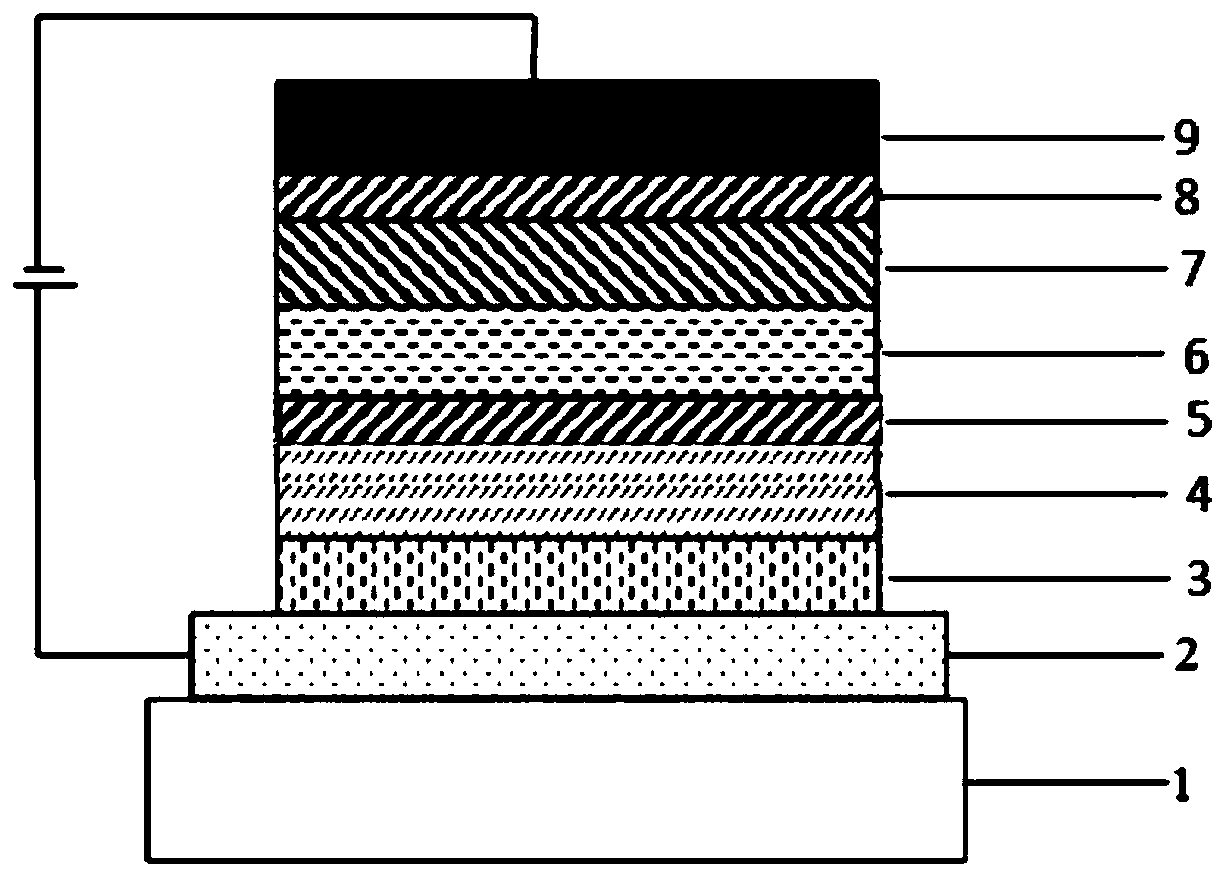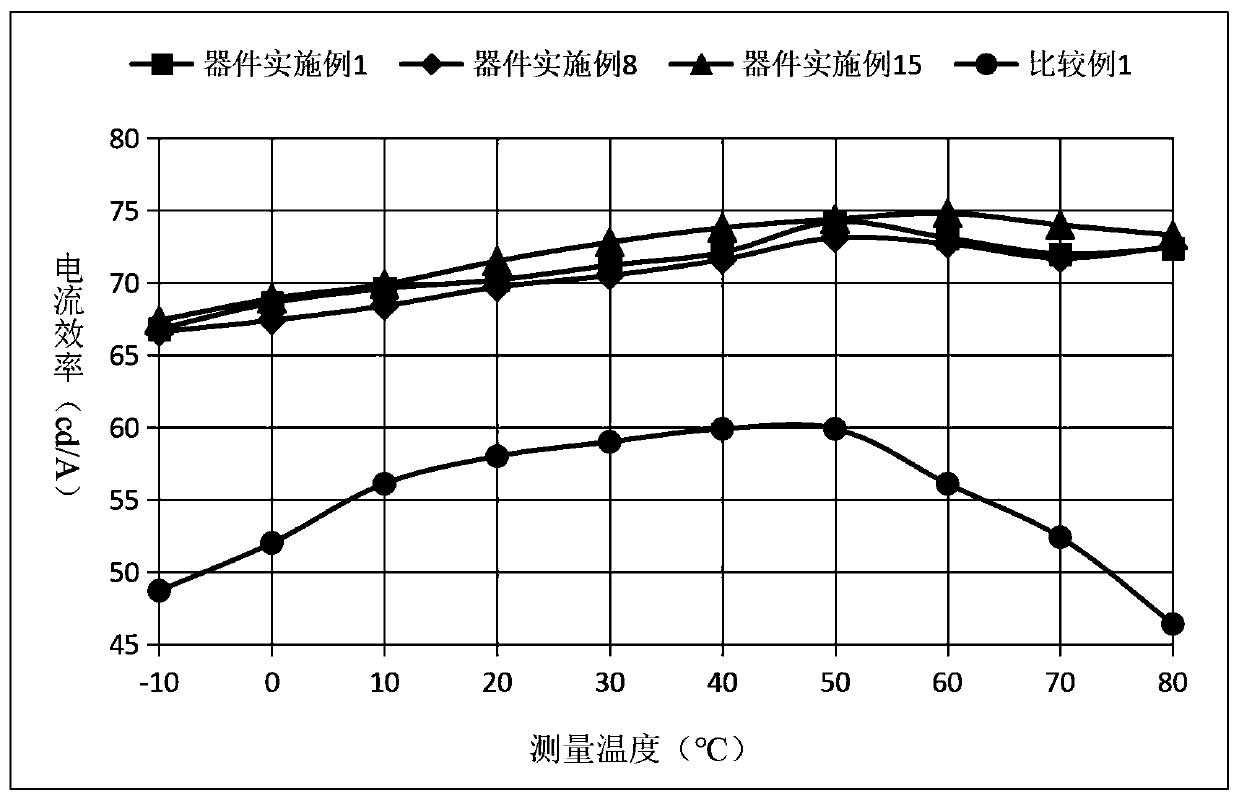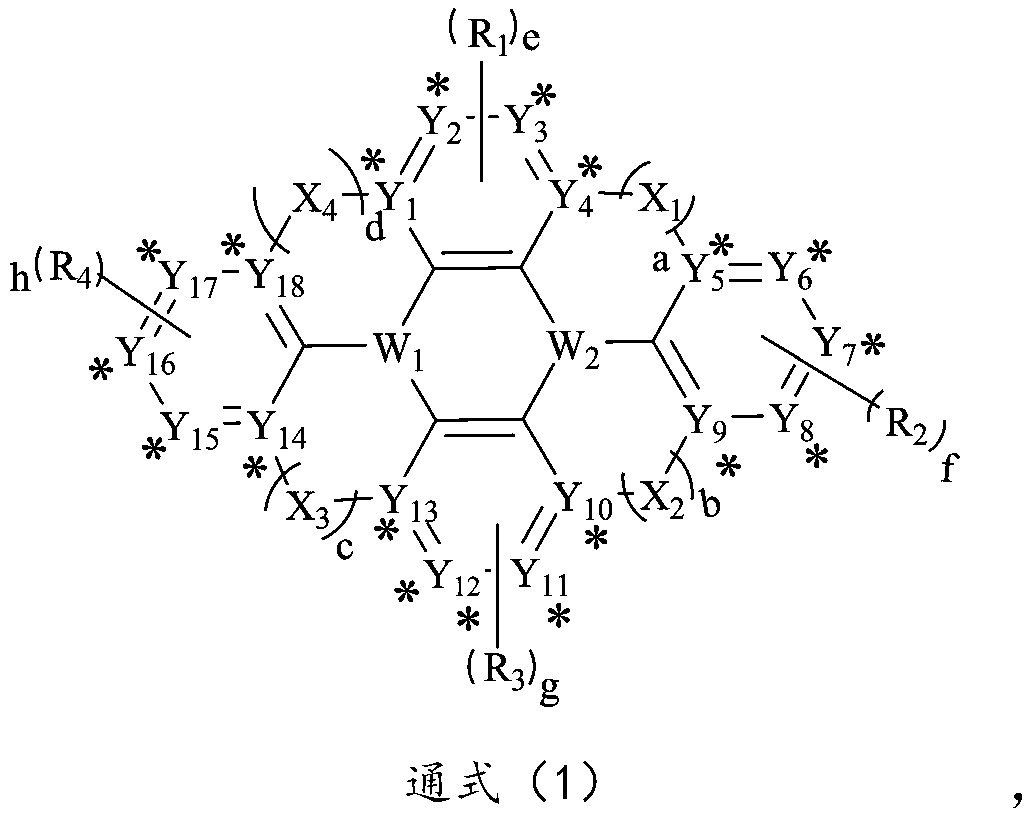Boron-containing organic compound and application thereof in organic electroluminescent device
An organic compound and general formula technology, applied to organic compounds and their application in organic electroluminescent devices, can solve difficult and high exciton utilization and high fluorescence radiation efficiency, efficiency roll-off, and low S1 state radiation transition speed etc.
- Summary
- Abstract
- Description
- Claims
- Application Information
AI Technical Summary
Problems solved by technology
Method used
Image
Examples
Embodiment 1
[0068] Embodiment 1: the synthesis of compound H2:
[0069]
[0070] (1) In a 250ml three-neck flask, under the protection of nitrogen, add 0.01mol of raw material 1, 0.012mol of raw material 2, and 150ml of toluene, stir and mix, then add 0.02mol of sodium tert-butoxide, 5×10 -5 mol Pd 2 (dba) 3 , 5×10 -5 mol of tri-tert-butylphosphine, heated to 110°C, refluxed for 24 hours, sampling plate, showed that there was no raw material 1 remaining, and the reaction was complete; naturally cooled to room temperature, filtered, and the filtrate was rotary evaporated under reduced pressure (-0.09MPa, 85°C ), through a neutral silica gel column to obtain intermediate I-1, with a HPLC purity of 98.4% and a yield of 65.2%;
[0071] (2) In a 250ml three-neck flask, under the protection of nitrogen, add 0.01mol of intermediate I-1, 0.012mol of tert-butyllithium, and 150ml of tert-butylbenzene, stir and mix, heat to 60°C, and stir for 2 hours; then Naturally cooled to room temperature...
Embodiment 2
[0075] Embodiment 2: the synthesis of compound H12:
[0076]
[0077] The preparation method of compound H12 is the same as in Example 1, except that raw material 4 is used to replace raw material 1, raw material 5 is used to replace raw material 2, and raw material 6 is used to replace raw material 3. Elemental analysis structure (molecular formula C 78 h 48 BN 3 o 2 ): theoretical value C, 87.55; H, 4.52; B, 1.01; N, 3.93; 0, 2.99; test value C, 87.53; ESI-MS(m / z)(M + ): The theoretical value is 1070.07, and the measured value is 1070.10.
Embodiment 3
[0078] Embodiment 3: the synthesis of compound H20:
[0079]
[0080] The preparation method of compound H20 is the same as in Example 1, except that raw material 1 is replaced by raw material 7, raw material 2 is replaced by raw material 8, and raw material 3 is replaced by raw material 9.
[0081] Elemental analysis structure (molecular formula C 90 h 60 B 4 N 4 ): theoretical value: C, 87.12; H, 4.87; B, 3.49; N, 4.52; test value: C, 87.12; H, 4.88; B, 3.50; N, 4.50. ESI-MS(m / z)(M + ): The theoretical value is 1240.74, and the measured value is 1240.70.
PUM
| Property | Measurement | Unit |
|---|---|---|
| thickness | aaaaa | aaaaa |
| thickness | aaaaa | aaaaa |
Abstract
Description
Claims
Application Information
 Login to View More
Login to View More - R&D
- Intellectual Property
- Life Sciences
- Materials
- Tech Scout
- Unparalleled Data Quality
- Higher Quality Content
- 60% Fewer Hallucinations
Browse by: Latest US Patents, China's latest patents, Technical Efficacy Thesaurus, Application Domain, Technology Topic, Popular Technical Reports.
© 2025 PatSnap. All rights reserved.Legal|Privacy policy|Modern Slavery Act Transparency Statement|Sitemap|About US| Contact US: help@patsnap.com



